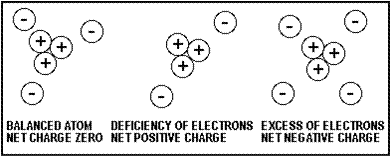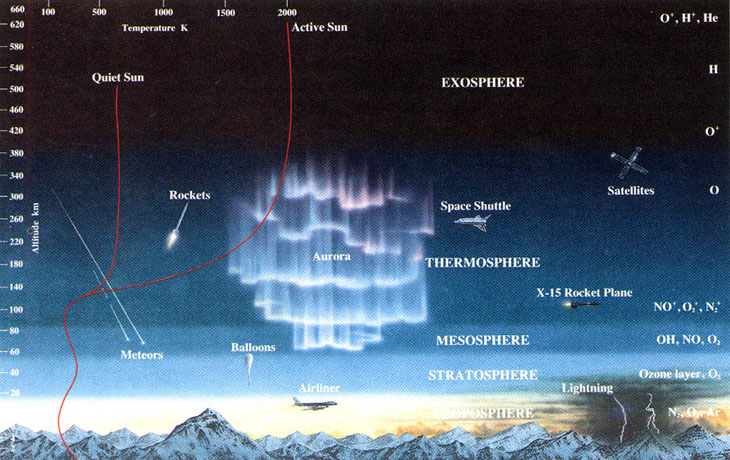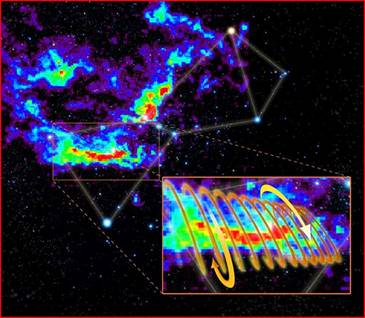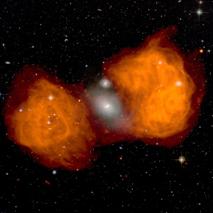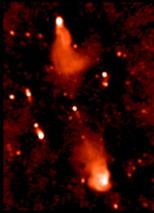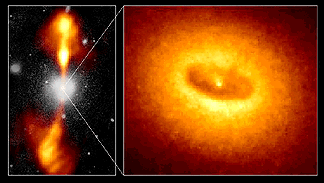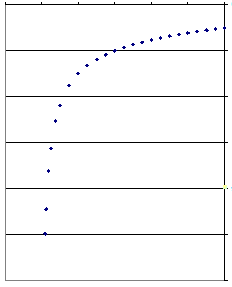The Plasma Model of Creation
We have no argument with the possibility that God did everything in Creation Week via miracles. That may be what happened. On the other hand, after the initial act of creation from nothing of time, space and mass (definitely a miracle), He may well have used the very processes He created to form the rest of the physical universe. If He used gravity, then yes, it must have taken billions of years and there are many, many problems which would require miracles. But if He used electromagnetic energy along with the enormously faster atomic processes which data indicate existed in the past, then the formation of the universe in a few literal days, in exactly the manner the Bible indicates, is not only possible, but highly probable. The gravitational model is the one currently accepted by the general scientific community and the one that is taught. But gravity is a weak force, easily defied. Every time you pick up an object, you defy gravity. But the gravitational model has some major astronomical problems which have required the invention of 'dark matter' and 'dark energy,' as well as the use of some very convoluted mathematics. On a small scale, such as our solar system, gravity as a major force works well; on a larger scale, such as a galaxy, it doesn't. It is the current research into plasma and electrodynamics which appears to have the answers, and that is our focus here. See what you think.
Most of us know what an atom looks like – equal numbers of protons in the nucleus and electrons circling it. This results in the atom being electrically neutral: protons carry a positive charge and electrons carry a negative charge.
We are all familiar with the everyday three states of matter which involve neutral atoms: solid, liquid, and gas. Most things can exist in all three states, given the right conditions. Water is the easiest to use as a demonstration. As a solid, it is ice; as a liquid, it is water; as a gas, it is steam. The difference is heat. The more heat there is, the faster the molecules move and the more they drive each other apart. Conversely, the colder it is, the less the molecules move, so the closer they are to each other. Most, but not all, elements and compounds react in the same way: the more heat the more they can become liquid and then gas. .But there is a fourth state of matter. When the heat or electrical energy becomes high enough, one or more electrons are stripped off the atom. The free electrons have a negative charge and the atom without them now has a positive charge. This is a plasma.:
Plasma exists in three forms, or modes. 1) Dark (you can't see it, but you can see through it) 2) Glow mode
3) Arc mode
In general, the larger the atom, the more easily an electron is kicked off. The amount of energy required to kick off an electron is called the ‘ionization potential.’ When these positive atoms or negative electrons, which make up a plasma, are in movement, they form an electric current. Every electric current is surrounded by a circling magnetic field (which keeps it as a current and not dissipitating in every direction). This is why it is called electromagnetism.
Electromagnetism is an extremely strong force. If you lift your foot off the floor, if you pick up a glass of water, you have defied gravity. Gravity is rightly called a weak force. But try to pull two magnets of just a medium size directly off each other (without sliding them) and you have to use quite a bit more energy than picking up that glass. We think of electric currents as invisible, but they are not necessarily so. Plasma, which, when in motion is electric currents, can be seen in both glow and arc modes. Plasmas are all around us. Glow mode plasma we see in the auroras. Arc mode plasma we see in lightning, and also in a welder's torch. Neon signs are visible plasma. Plasma screen televisions are plasma. The neon signs and televisions are not caused by heating the elements involved, but rather by using high electrical energy. Of all the material in the universe, over 99% is in the form of a plasma. This is because if a gas is only slightly ionized, it will behave as though it were fully ionized. Plasma filaments can be seen throughout space. The common view of the sun is of a giant nuclear furnace, collapsed in the eons past by gravity, and burning fiercely in the center. However the data dispute this. Sunspots are dark, depressed areas on the sun. If they are depressed and thus closer to the center, they should be hotter, right? Not so. They are cooler. The hottest area of the sun is actually just above the surface of it. This does not make sense gravitationally. In addition, a solar wind of positively charged particles -- primarily protons -- is streaming out from the sun in long filamentary structures. Without protection, this constant bombardment of protons would endanger all life on earth. If, in contrast to the gravitational theory however, the sun is a plasma, it makes sense. A plasma sun would have its hottest part just above the surface where the interactions are occurring. The solar wind would be expected to be plasma filaments. Coronal mass ejections (which can wreak havoc with our satellites, computers, etc.) are clearly understood if coming from a plasma. The sun behaves like a large plasma orb.
This was a puzzle for many years. The gorgeous shining streamers of lights in the northern and southern skies fascinated and sometimes frightened people. What was going on? As it finally turned out, the earth itself, just like all the planets, is surrounded by a monster plasma sphere. It is high above what we see as the 'sky' where the clouds are. It starts at the Mesosphere and extends through the Exosphere and even beyond, into 'space.'
This is our protection from the solar wind and the sun's ejections, all of which are highly electrically charged, moving plasma. However, the earth has the magnetic north and the magnetic south at which points the plasma sphere tends to arc in toward the surface of the planet. This creates a sort of weak spot where the solar wind can enter.
When it does, it energizes the plasma in these localities and the result is that plasma in these areas goes into glow mode with each current of charged particles from the sun. The streamers of various colors depends on which elements are reacting to the energizing.
The photo on the right is taken from right underneath the auroras.
We live in a plasma system. Regardless of what model is being put forward -- gravitational, Big Bang, plasma, Creation -- in whatever combination, the consensus is that the earliest universe was a plasma. This, at least, is not argued. The standard gravitational model says the system switched to a primarily gravitational series very quickly. Plasma physics disagrees. Why? Because what we see ‘out there’ is primarily plasma. Also because the actions of plasma negate the ‘necessity’ for making up things like dark matter, dark energy, etc. With a plasma, the movement of the charged particles generates electric current. Every electric current is surrounded by a circling magnetic field which constricts it. This results in a filamentary structure. We see these filaments throughout space.
Electric current strength in plasma clouds in space is about ten thousand billion amps. By contrast, our auroras are only 650 thousand to one million amps. Near the center of our galaxy, there is a plasma filament 300 light years long.
This photograph of Orion shows the filamentary structure and the diagram at the bottom shows the direction of the magnetic field circling it. These are giant structures, but not the biggest in the universe. There are plasma filaments much, much longer than this. If you go to the article associated with this photograph, you can see more of the problem plasma physicists are having with standard gravitational cosmology. Refusing to acknowledge what they are actually seeing, the gravity explanations can get strange, as the author of the short article points out. Although plasma filaments are constrained by their own magnetic fields, they are very unstable and can bend and twist very quickly and easily. You can see this in lightning, and in a plasma ball.
Lightning doesn’t hang around for very long, as it is simply a form of equalizing electromagnetic differences between two parts of the atmosphere or the atmosphere and the ground. However plasma filaments in space are there for a very long time – since shortly after creation. Their instabilities show up as pinches, called Z pinches or Bennett Pinches. What happens at these pinches answers some interesting questions. At these pinches, these compression points, stars form. It doesn’t take millions of years.
On the left is the Ant Nebula and on the right is the Bug Nebula. Both show the pinch where a star has formed. In the gravitational model, star formation is caused by the gradual 'gathering together' of particles until they form enough of a ball that they can collapse into a hot, nuclear star. This takes a very, very long time. In addition, the heat of this coalescing material should actually drive it apart rather than allow it to contract into a star. However plasma moves and reacts extremely quickly. In the earliest days of our universe the actions and reactions were incredibly faster than now, as we will try to explain a bit below. Pinches in the plasma filaments formed plasma balls, or stars, very quickly. We can see the evidence of this today. If you look at whole galaxies, you will see where stars have formed like beads on a string along the filaments.
Remember, everyone seems to agree the earliest universe started as plasma. So now let's look again back at Genesis 1:2. This beginning 'firm stuff' had no form and was void. The Holy Spirit was driving it. Plasma has no form. It is void. The Big Bang model says the first element, and the only element was hydrogen. They can get helium from hydrogen in the original hot mix. But after that they have a problem: how to get the other elements. The only way they have theorized it possible to get other elements from hydrogen is to have it happen via fusion in stars, so that when these first stars burst, or became novas, they spread these newly formed elements throughout space. But there is a major problem with trying to theorize star formation from just hydrogen and helium. This is because as the theoretical gas cloud of these elements condenses, the heat of the condensation would cause the cloud to re-expand, forbidding star formation. It is not until you have the heavier elements you need to make in the first place that you can get heat transferred out of this theoretical condensing cloud to form the other elements themselves. Thus gravitational collapse with just hydrogen and helium is impossible. What about 'waters?' The word for heavens is 'shamayim' which incorporates the word for waters. The Holy Spirit was driving this surging mass that had no form and was void across the face of or in the face of 'waters.' We think of water as liquid. But if we think of it, rather, as H20, or two hydrogen for every oxygen, then we have the clue that we need. The first creation was not simply of hydrogen nuclei, but of oxygen as well. They would have been created in a two to one ratio -- exactly what we find in water. How do we get the other elements out of a water plasma? There are two options, and maybe both are applicable together. First, Dr. Ed Boudreaux, Professor emeritus in chemistry, has worked with this concept and mathematically shown that all the elements in their known abundances can be produced from a very hot water plasma in a short amount of time – something like half an hour! Second, fusion reactions occur where there are high voltage differences in plasmas. These fusion reactions can form any or all of the elements very quickly. So what we see in the Bible has probably not been a reference to a nice round little blue ball in the beginning, but to a violent surging water plasma from which the entire universe was formed. We can see the plasma filaments and the interactions out in space. Just as importantly, however, we can see and work with plasma filaments in the lab. You can have fun with them at home, actually, if you have a plasma ball such as pictured above. They are not expensive and can be ordered on line. You have probably seen them at one time or another. In both the galaxies and in the plasma ball, if you look carefully, you can see the filaments, often in pairs, twisting around each other. Here is the same picture shown above:
Here is what happened in the lab when filaments were viewed from the top during a twist:
This is EXACTLY what we see out in space. The middle top of this series shows the formation of what we refer to as radio galaxies, where the two lobes of the galaxies are actually a 'head on' view of the spiralling filaments:
As the plasma filaments approach more closely, there begins a giant interaction in the middle. It shows up in the middle of every galaxy we see in the distance. It is called a quasar. This one is a 'miniature' in the Crab Nebula.
The jets shooting out from the 'top' and 'bottom' are charged particles -- one side negative and the other side positive. This one is not at the center of a galaxy, but they come in all sizes in plasma interactions. Below is a picture of a larger one which is at the center of a radio galaxy. This picture is from NASA.
The farther out we look (and thus the longer back in time), the brighter the quasars are -- so much so that they outshine all the stars in their own galaxies. Gradually, as a galaxy ages, its quasar jets gets smaller until, as we have in the center of our own galaxy, only spinning disks which emit x-rays are left. No black holes. They are necessary imaginings of the gravitational model. As the interactions between the filaments continue after quasar formation, we see first a barred spiral galaxy, and then the beautiful fully-formed spiral galaxies:
Notice again the stars strung out like beads on strings where the plasma filaments have pinched.
In short, what we see with plasma filaments in the lab is the same thing we see out in space. It has nothing to do with gravity. Gravitational physics has no explanation for why the outer arms of these spiral galaxies are spinning around the core as fast as the interiors of the arms are. The outer arms should disrupt completely, but they don’t. So, according to the gravity model, there MUST be an enormous amount of ‘dark matter’ we cannot see holding all this together. Unless, of course, it is not gravitational effects we are looking at, but the electromagnetic effects of plasma. In the lab, the outer ‘arms’ of the spirals spin around as fast as their inner sections. Nothing falls apart. There is no need for dark matter, dark energy, or dark forces. Gravity takes over when planets circle suns and moons circle planets, but it is not, and never has been, responsible for the formation of stars, galaxies, or even our own solar system.
Twelve times in the Bible we find a very interesting statement, often quoted from God Himself:
It took science a few thousand years to catch up, but the Big Bang model was first put forward in the late 1940's. It was ridiculed and, in fact got the moniker 'Big Bang' because it was too close to something 'religious.' The Bible says the heavens were stretched out. When the evidence of this became incontrovertible in the 20th century, the Big Bang model (which is really a 'big expansion' model) was finally accepted. There are some major differences between it and the Bible, however. The Big Bang model has no energy source for the rapid expansion of space and matter. In the Bible we find God claims to have done it. That is definitely an energy source. The Big Bang model says the universe is still expanding. But in the Bible we read that this stretching of the heavens is always referred to in the context of creation and creation week. As it turns out....again....the data supports the biblical explanation. Let's take a look. In order to find out why standard astronomy not only thinks the universe is still expanding, but is expanding ever faster and faster, we need to look at something called the "red shift." Any element can give off light. Light happens when an electron is forced out of its position relative to its nucleus and then snaps back into position. That snapping back releases a tiny photon of light. But the light given off by each element is slightly different. Each element has a 'signature' in its light something like we see with the bar codes on the things we buy. These 'bar codes' exist as lines across the spectrum of visible light. Here are a few:
Each of these 'bar codes' for each element has a specific place in the spectrum of light here on earth. This is the standard we go by. This is how we know what elements are in space and in the stars. Light from a specific source is analyzed in a spectrometer and the bar codes which show up tell us what elements are giving off that light. This is how we know, for instance, that iron is in the galaxies at the farthest reaches of the universe. Remember, the farther out we look, the further back in time we are also looking (regardless of a short time frame or a long time frame). So, because iron is a heavy element, and should not have been formed very early, the fact that it is showing up in the earliest known universe is not something gravitational theorists are easily accepting. But there is something else that fascinated astronomers when they saw it. As we look out past what is called our 'local group' of galaxies, the bar codes of the elements were still there in pattern, and thus still recognizable -- but they were shifting to the red end of the spectrum. And the further out we looked, the more the bar codes were shifting to the red. This is the "red shift."
The initial thought, in the 1920’s was that this red shifting of light was a Doppler shift. You have been aware of a Doppler effect when a siren passes you. As the police or fire vehicle passes you, the sound of the siren drops suddenly. That is because the sound waves, as the vehicle recedes from you, are being stretched and so they sound lower. It was thought that the light waves from the distant galaxies were doing the same thing, and thus indicating a currently expanding universe. There was a major problem with this, however. Suppose you saw a car on the freeway going first five miles per hour, and then, suddenly, ten miles per hour. But it never went through the stages of 6, 7, 8, or 9 miles per hour. Then it jumped to 15 miles per hour without any 11, 12, 13, or 14 miles per hour. This would defy physics as we know it. Yet that is essentially what we are seeing with the red shift measurements as we look out into space. They come in ‘clumps’ and then, as you go out further, there is a sudden change to another group, with no measurements in between. This is not simply a matter of space being in between the groups being measured, for this jump can be seen to take place in the middle of a galaxy! So unless the universe is expanding in sudden jumps, the red shift is not a sign of current expansion. This is still, however, what is being taught in physics and astronomy classes as well as being the presumption behind all current explanations of the red shift. So what is another possible explanation for the red shift? If you take a rubber band and stretch it, you are putting your own energy into the rubber band. Let it go, and the rubber band streaks across the room, gradually slowing down. The energy you put into the stretching is called 'potential energy.' It's not doing anything until you let the rubber band go, but it is still there. When the rubber band is released, the potential energy is released as 'kinetic energy.' The change from potential to kinetic is extremely rapid at first and then slows down. It is not just gravity which slows it down. You only put so much energy into the fabric of that rubber band and so there is only so much it can expend as a result. God put energy into the stretching of the fabric of space. That energy was, in the first instants, all potential energy. Then it started changing, extremely quickly at first and then more slowly later. This energy exists today as something we call the Zero Point Energy. It has that name because it exists in enormous amounts even in a vacuum from which all matter has been removed and the temperature lowered to absolute zero. The change from potential to kinetic energy was extremely fast at first, during Creation Week especially. This resulted in a number of effects, two of which are important here: 1. Atomic processes were extremely rapid at first, so that something called 'radioactive decay' was happening extremely quickly.
With the extraordinarily fast atomic rates in the first days of creation, a billion or so 'atomic years' could happen in a day or less at first. The transition from potential to kinetic energy, the buildup of the Zero Point Energy. By the time Enoch was born, roughly a thousand years after creation, it had already started on the curve which would result in an almost even line about a thousand years later. The decline in atomic rates stopped about the time of Peleg, which is about the time the ZPE had built to its peak..
The above graph shows the rapid transition from potential to kinetic energy, and thus the increase in the Zero Point Energy 2. Atoms themselves reacted to the changes in the Zero Point Energy. If you push against a heavy object, such as a dining room table, it will resist moving until your energy exceeds its ability to stay in one place. Then it will jerk forward. Unless you increase your energy immediately, however, the table will jerk and then stop. Then you must expend more energy to get it to jerk forward again. The atoms reacted the same way where the increasing Zero Point Energy was concerned. They resisted change and then jerked into a higher energy state. (Note: there is a much more accurate technical explanation regarding where electrons are in relation to the nucleus, but for the purposes of basic understanding, this will suffice.) In color wavelengths, the blue end of the spectrum is more energetic than the red. So the color the atom would emit as light would be slightly bluer with each jerk forward from the increase in the Zero Point Energy. The 'newest' would then be here and now. The older color would be as we look out into space, and the further we look out, the older the time is that the light was emitted, and therefore the redder the light is. It is because the atoms resisted changes in the ZPE and then jerked into a higher energy state when they could no longer resist that we see the 'quantized' red shift, or the measurements coming in clumps instead of being smoothly smeared out -- which is what they would have to be if the red shift meant an expanding universe. At the beginning the red shifts were happening very fast, and when we look out to the edges of what we can see in the universe, there are some very dramatic red shift numbers. (This is why current science thinks the universe is expanding ever more rapidly.) But the red shift measurements come in 'clumps' -- and unless the universe is expanding in fits and starts, the red shift is indicating a change in the energy states of the atoms themselves and not in the size of the universe. The actual evidence, therefore, seems to be showing us that the universe expanded rapidly at first but is not longer expanding. The potential energy which went into the expansion became the kinetic energy we refer to as the Zero Point Energy which is pervasive throughout the cosmos. The build-up of the ZPE caused originally rapid atomic processes to slow as well as causing the atoms in the universe to jump to higher energy levels at various times, thus blue shifting the light as we approach the nearer areas, and thus more recent time, in the universe. This means light is red shifted as we look out in space, which is back in time. This is also evidence which points to a very young creation, just as the Bible is telling us. For more information in this area, check the articles in Setterfield Simplified. There is more coming up with light and darkness, the earth being in existence before the sun lit, the timing of the stars forming and lighting, but that comes with the relevant verses during Creation Week. Up to this point we can show that God may have used the same plasma physics He created to form galaxies and stars, and this very, very quickly within the first few days of creation. Was the Holy Spirit driving the surging mass the same as the stretching of the heavens? It may have been.
|


